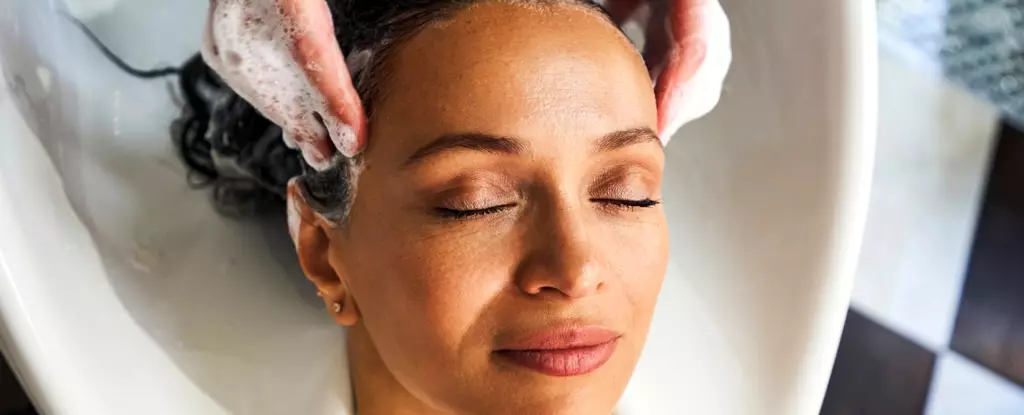For many, a day at the hair salon is synonymous with relaxation and self-indulgence. The soothing ambiance, the gentle hum of hairdryers, and the aromatic scents of shampoos and conditioners create an environment meant to pamper. However, unbeknownst to most patrons, there exists a rare but serious health risk known as Beauty Parlor Stroke Syndrome (BPSS). This condition turns what is typically a routine beauty treatment into a potential crisis for a minority of individuals, resulting in severe health implications during what many perceive to be a benign procedure—hair washing.
The mechanism behind BPSS is surprisingly simple yet alarming. When sitting in the backwash area of a salon, clients often recline backward, positioning their heads over the edge of a basin designed to facilitate hair washing. In this posture, there lies a risk: awkward angles and positions can strain the neck and the spinal column. Research has indicated that such positioning, especially when coupled with vigorous washing motions from the stylist, may lead to a significant injury, including strokes.
First identified by neurologist Michael Weintraub in 1993, BPSS presents itself with symptoms that are eerily similar to those of a conventional stroke, making it crucial for individuals to recognize these red flags. Strokes occur due to a sudden interruption of blood flow to the brain, often resulting from a blockage or the rupture of a blood vessel.
Though BPSS is a rare occurrence—reflected in the limited studies conducted over the years—it is vital to remain aware of its symptoms. Signs can include severe headache, dizziness, blurred vision, nausea, and neck pain. In some instances, clients may even experience paralysis on one side of the body or faintness, causing alarm to those around them. One of the significant concerns with BPSS is the delayed onset of symptoms, complicating timely diagnosis. Medical professionals may struggle to distinguish BPSS from traditional strokes, given the similar presentations of both.
Research suggests that while BPSS is more likely to impact women over the age of 50, no one is entirely immune to its potential dangers. Individuals, regardless of age or evident health conditions, should remain vigilant about how they feel during their salon visits.
For those who find themselves uncomfortable while using backwash sinks, taking proactive measures is crucial. Clients should feel empowered to communicate their discomfort to their hairstylists. Requesting to lean forward rather than reclining can drastically reduce the risk associated with BPSS. Additionally, if leaning forward is not an option, inquiring about potential neck support during the shampooing process can also diminish strain.
Moreover, the speed and method of hair washing can play a pivotal role in preventing injury. Clients should advocate for a gentler wash and limit their duration in the backwash position. Informing stylists about any discomfort, alerting them to personal sensitivities, and maintaining an open dialogue can contribute to a safer salon environment.
Despite the potential risks associated with BPSS, it is essential to understand that going to the hairdresser serves a significant role in promoting mental health and self-esteem. The engaging experience and self-care associated with salon visits can boost confidence and overall well-being, making the environment generally safe and enjoyable for the majority of clients. Using a towel as neck support can further enhance comfort during the washing process.
While BPSS presents a rare risk, awareness and communication are keys to prevention. Enjoying the benefits of a salon visit need not be overshadowed by fear of injury. Clients should remember that by taking proper precautions and expressing their needs, they can continue to indulge in the comforting ritual of hair washing while safeguarding their health. In the end, maintaining a healthy balance between relaxation and safety ensures the salon remains a haven for rejuvenation and self-care.


Leave a Reply